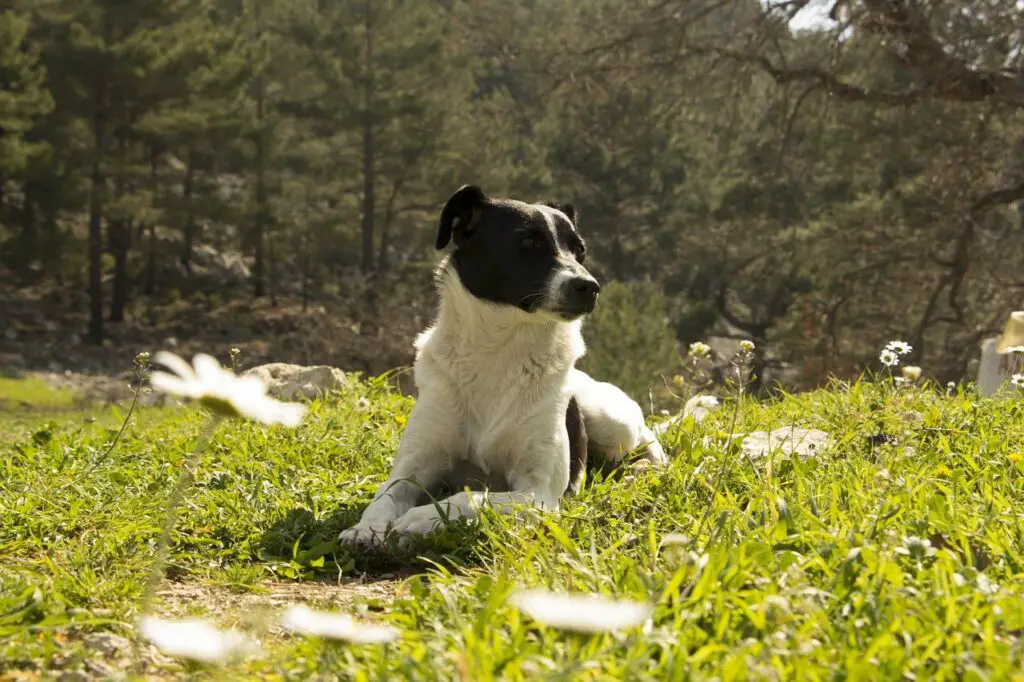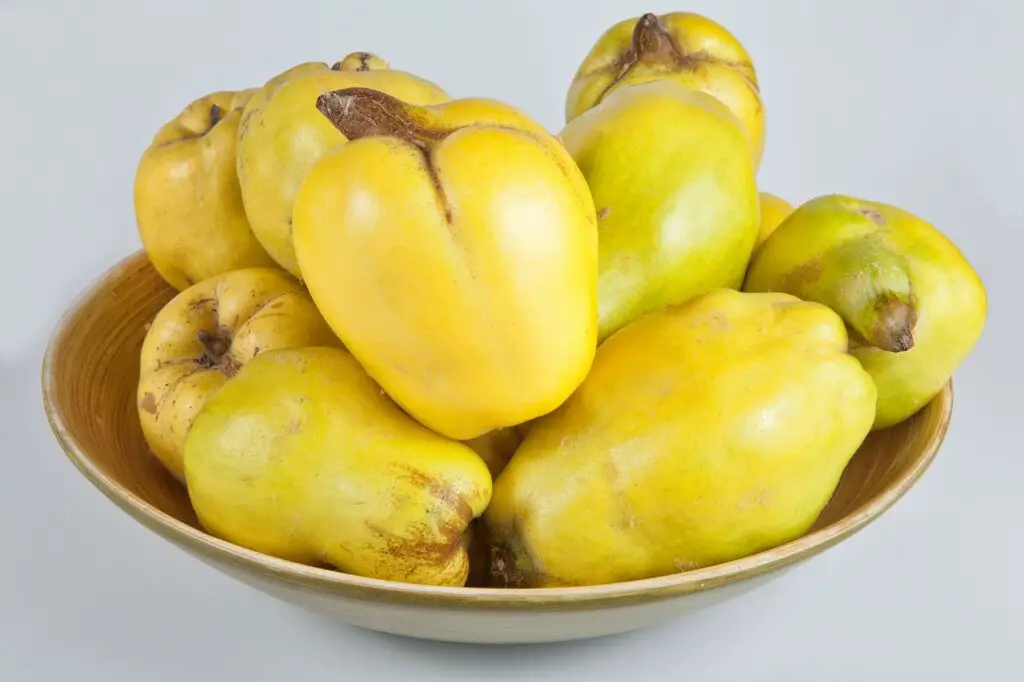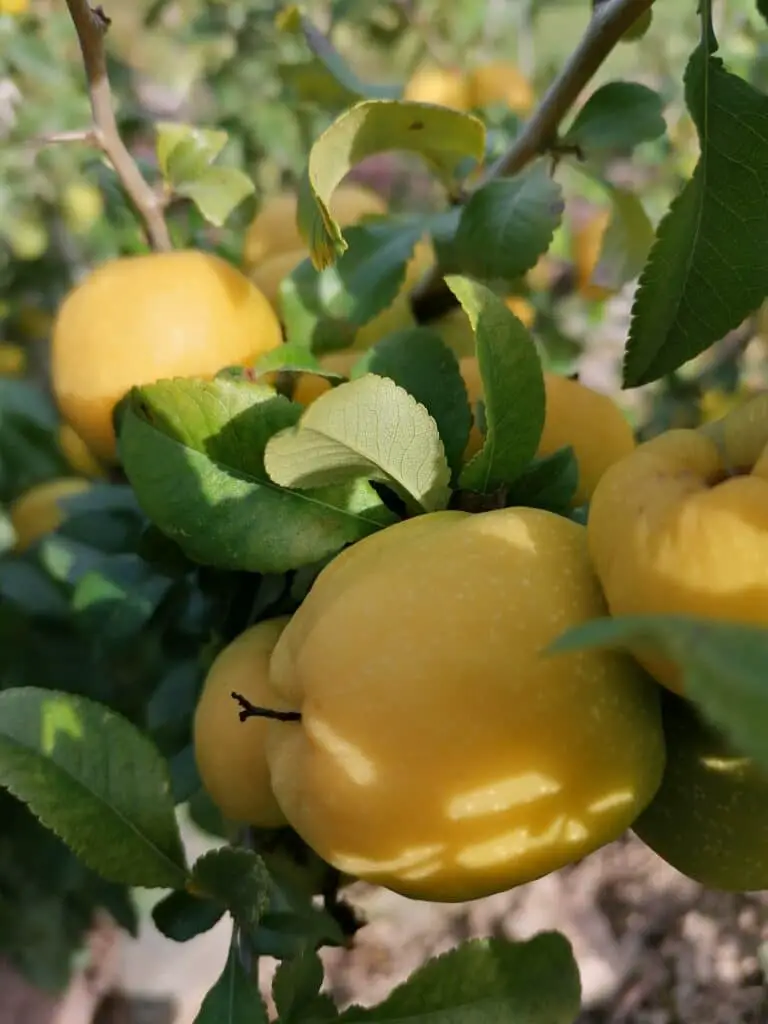Since we love to see our furry friends healthy and happy, sometimes we tend to think that anything adding nutritional value to us should do the same for them.
While this is partly true, you may be wondering if quince is safe for your fido.
So, can dogs eat quince?
Yes.
Dogs can eat quince in moderation as it’s loaded with essential nutrients, including potassium, copper, iron, and vitamin C.
It is also rich in fiber and tannins, which bind to cancer-causing chemicals in the colon while also protecting the mucous membrane of the colon from diverticulitis.
This article will answer all questions regarding quince and dogs.
It will also explain its benefits to your pup.

Is quince safe for dogs?
When offered in moderation, quince is safe for dogs to consume.
Quince contains essential nutrients, including copper, iron, potassium, vitamin C, and other important antioxidants.
The copper in quince is integral for absorbing minerals such as iron and calcium.
Potassium aids in functioning electrical charges in the heart, nerves, and muscles.
Iron helps carry oxygen in the hemoglobin of red blood cells throughout the body.
It also contains vitamin C and other important antioxidants that help reduce potentially harmful free radicals in your dog’s body while supporting healthy aging and reducing inflammation.
However, like most fruits, you should only feed your dog the fleshy part of the fruit as the seeds, leaves, or stems could be potentially harmful to dogs.
The leaves may contain traces of cyanide which can result in cyanide poisoning with symptoms like salivation, rapid or difficulty in breathing, and uncontrolled urination.
It can cause seizures, convulsions, paralysis, coma, or even death in the worst cases.
The seeds may also pose a choking hazard for your dogs and should be removed before feeding your dog.
Some dogs might also be allergic to quince.
If you notice an allergic reaction, including swelling and itching around the nose and eyes, coughing, or rashes, consult your vet immediately for guidance.
You should also cook quince a bit by boiling or poaching to soften it, making it palatable for your dog.
The fruit has naturally tough flesh making it hard for your dog to chew.
Avoid sweetening the quince while cooking as it also contains sugar.
The additional sugar may cause a surge of insulin to be released, leading to a dangerous drop in blood sugar levels which may cause severe problems, especially if your dog is diabetic.

Are dogs allowed to eat quince?
When eaten on its own, quince fruit may not be harmful to your dog.
You should never feed your dog its skin and seeds as they contain hydrogen cyanide which may cause respiratory failure and even death.
The seeds also may cause indigestion in your dog.
You should also feed your dog cooked quince as it can be challenging for your dog to chew in its raw form.
Health benefits of quince for dogs
When offered in moderation, quince is loaded with essential nutrients that may benefit your dog.
Some of the benefits may include:
- Dietary fiber – Quince is an excellent source of dietary fiber which aids in regular bowel movement, preventing constipation
- Vitamin C – Quince has a high vitamin C content, essential for your dog’s immune system and skin health. It also helps support healthy aging for your pup
- Antioxidants – The antioxidants in the fruit are essential in blood pressure regulation, neutralizing harmful free radicals, and protecting your dog from chronic illnesses. It’s also loaded with copper and potassium, which help relieve arthritic pain in dogs
How to feed quince to dogs
The serving size of quince fruit highly depends on your dog’s age, size, and general health profile.
However, it’s important to note that quince has high sugar content.
If consumed in excess, it can cause severe health issues like obesity, diabetes, and other heart-related problems.
You should cook it to soften and add flavor before feeding it to your dogs. Before providing your dog quince, you should:
- Wash thoroughly with clean water to remove dirt
- Peel off the skin as it may contain cyanide which is harmful to dogs
- Remove the seeds as they may also contain cyanide and can also cause indigestion if your dog consumes them
- Boil or poach it to soften and enhance the flavor
- Chop it up into bite-size pieces to prevent choking
- Serve the fruit in moderation to avoid sugar overload

Can dogs have a quince allergy?
While quince is considered a safe fruit for dogs to consume in moderation, some dogs may experience allergic reactions.
If you suspect your dog is allergic to quince or is experiencing discomfort after ingestion, consult your vet immediately.
Some symptoms may include breathing difficulty, swelling, itching, coughing, or rashes.
Can dogs eat quince paste?
Yes.
When fed in moderation, quince paste is a great source of dietary fiber, which strengthens your dog’s immune system and treats constipation.
Ensure the paste doesn’t contain the skin or seed as they may contain cyanide resulting in cyanide poisoning, a potentially fatal condition for dogs.
Quince paste also contains phloridzin, an essential antioxidant that helps protect against cancer and heart disease.
Can puppies eat quince?
Yes, you can offer puppies quince in moderation without the peels and seeds.
Like adult dogs, quince should only be fed as a treat and not replace his proper meal.
Puppies should only ingest the flesh itself as the seeds, leaves, peel, and stems may contain harmful substances like cyanide that could be toxic to dogs.
When consumed in large amounts, cyanide may cause respiratory failure or death for your puppy.
Similarly, if your puppy eats quince leaves, he may experience food toxicity and gastric issues such as diarrhea or vomiting.
Can dogs eat quince skin?
You should never feed your dog quince skin as it may contain a harmful pesticide that could be potentially fatal for your dog.
Quince also includes soluble complexes resulting in anemia and pancreatitis for dogs.
The skin may also be inedible for your dog, making it a choking hazard.
In conclusion
Now and then, a small portion of quince fruit should be a nice treat as it provides your pup with essential nutrients for their healthy growth.
Consult your vet for proper guidance if you’re unsure whether your dog is allergic or what portions to give.
- What Dog Breeds Have Pink Skin? - March 24, 2023
- What Are the Most Inspiring Dog Breeding Quotes? - March 20, 2023
- Can Pheromone Spray Help Improve Dog Breeding Results? - March 19, 2023








